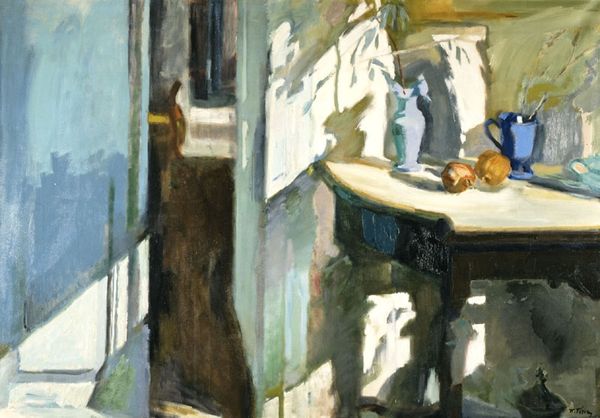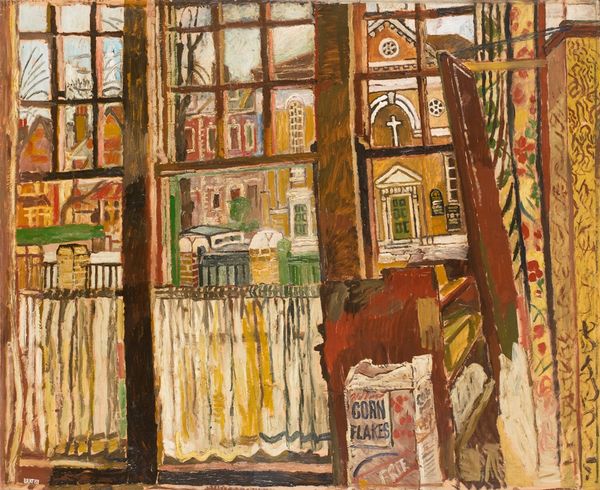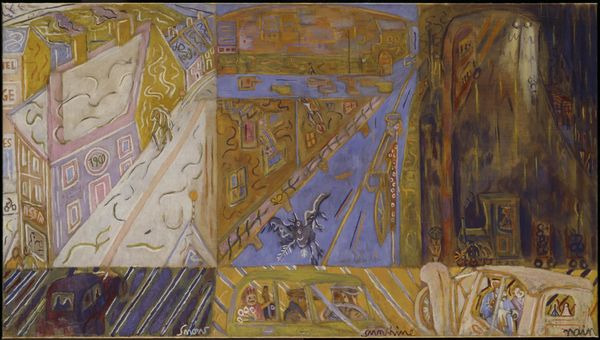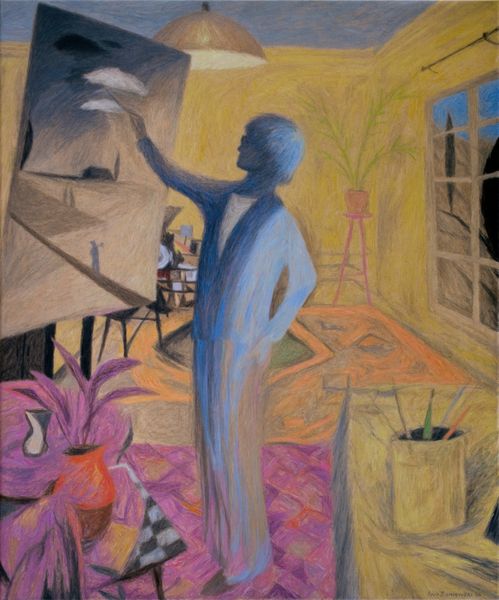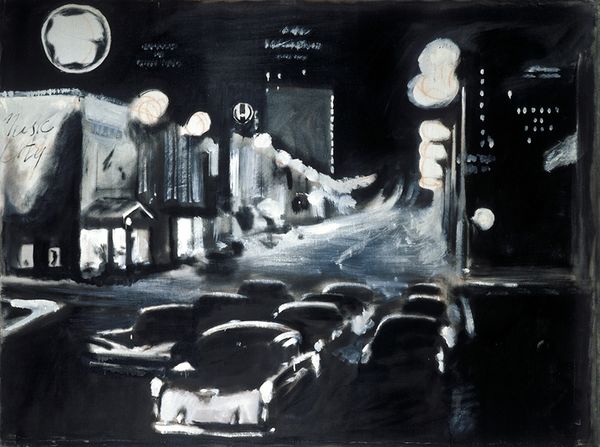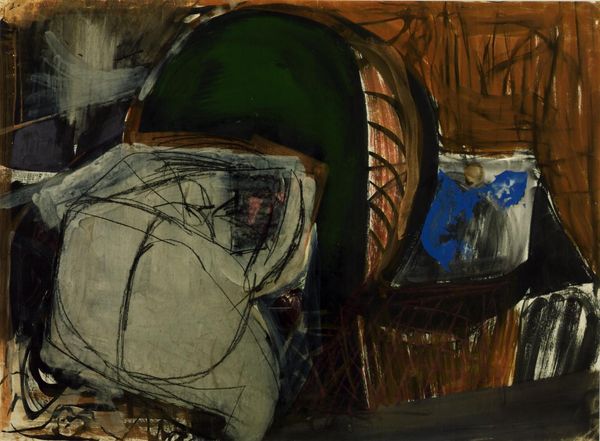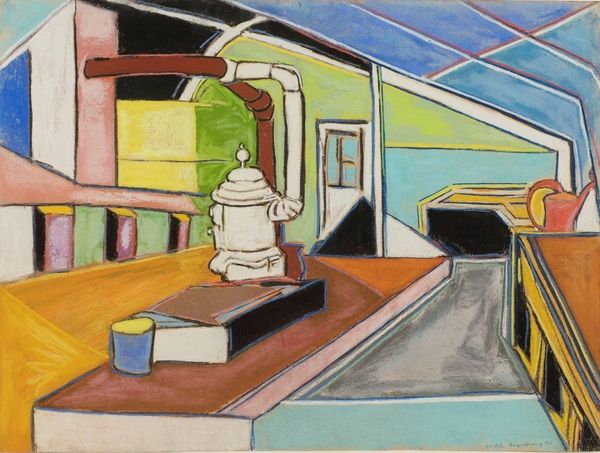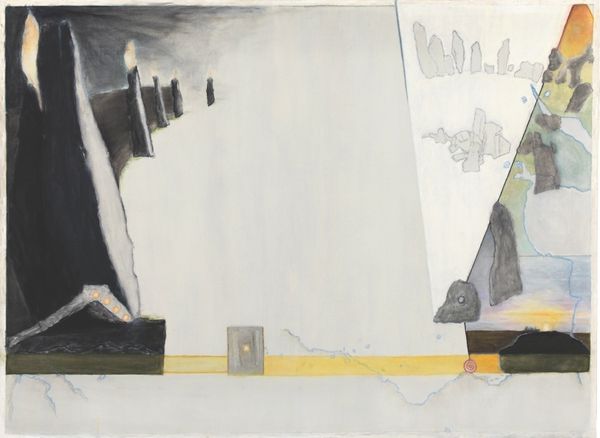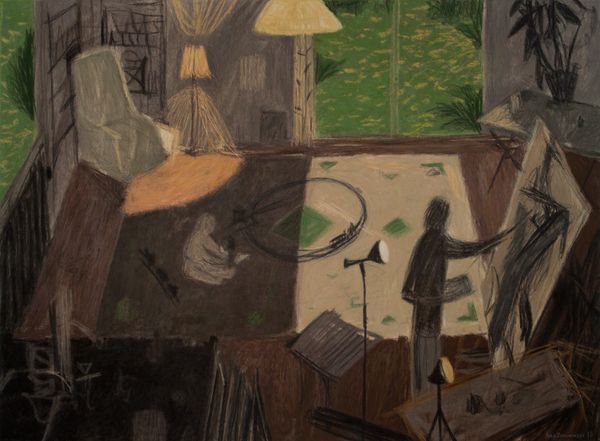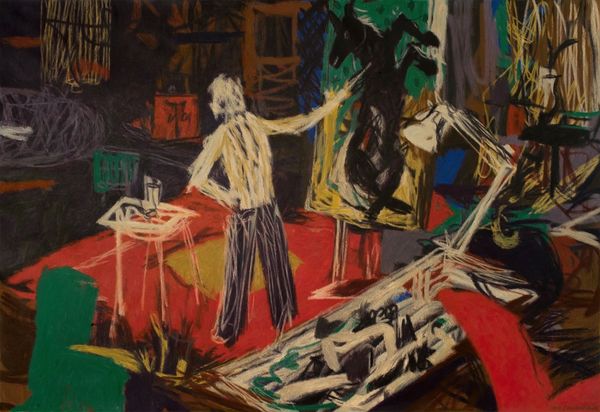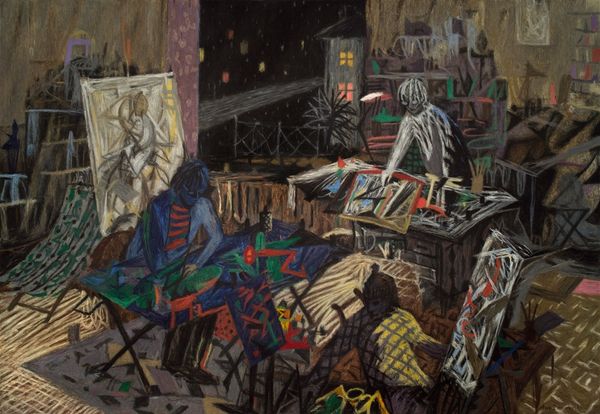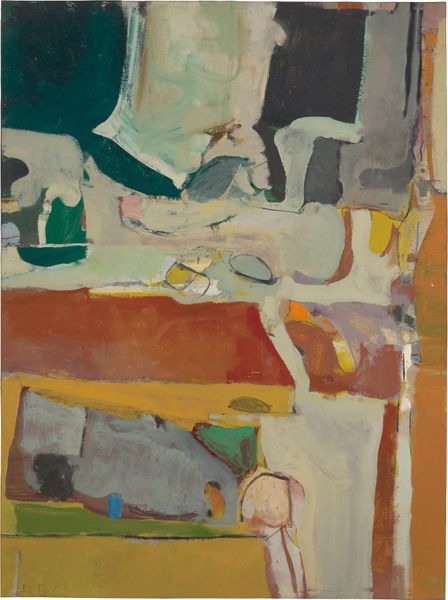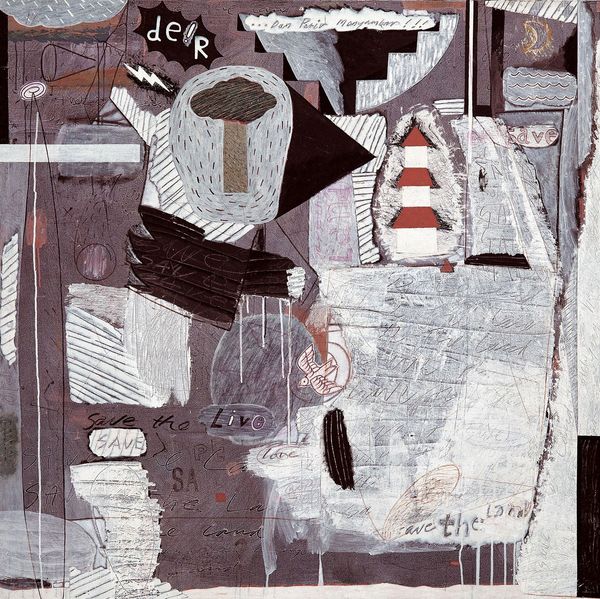
painting, oil-paint
#
painting
#
oil-paint
#
figuration
#
oil painting
#
genre-painting
#
portrait art
#
modernism
Copyright: Charles Garabedian,Fair Use
Curator: This oil painting by Charles Garabedian, created in 1966, is titled "Restaurant (The Waitress)." Editor: My immediate impression is the overwhelming tension, almost theatrical. The scale feels off, dreamlike. Curator: It's interesting you say that. Garabedian’s process often involved a kind of collage, piecing together different viewpoints and scales. His relationship to the physical act of layering oil paint seems deliberate, avoiding slickness in favor of something rawer, more constructed. Editor: Absolutely, and that rawness lends itself to questions of labor. The subject herself, the waitress, looms large in a somewhat degrading fashion. She is placed in proximity to the mechanics of restaurant work: the kitchens, dishes, and storage. It makes you think about class and the service industry as experienced by a woman. Curator: Indeed. Note how the spatial construction, which can feel simultaneously flat and deep, is rendered with muted grays against a jarring burst of crimson. This contrast points to the conditions of production that are usually out of sight, a reality typically sanitized. Garabedian, with these combined techniques, makes them apparent. Editor: I am reminded that it’s a modernist painting that is playing with space, but it's also about so much more than pure formalism. It is highlighting a certain societal imbalance within capitalist labor structures, especially within the gendered world of restaurant work. She isn’t just standing there; she is waiting. Waiting, specifically, on tables, maybe a life, even. Curator: Right. The materiality of this painting—the brushstrokes, the color choices—aren't merely aesthetic; they embody this tension. We must acknowledge the labor of artistic production mirroring the subject's labor in the painting. It is an art that understands itself as constructed within specific social, political, and material constraints. Editor: Thinking through his choices, and the reality that art itself is an object made for the marketplace makes it hard to simply look at any painting on its own. It all contributes to an understanding of both artistic work and also regular work. The materiality reminds me of that daily grind and that connection between women and labor. Curator: Precisely. It provides much for those thinking critically about art and society. Editor: Absolutely. Thank you.
Comments
No comments
Be the first to comment and join the conversation on the ultimate creative platform.
